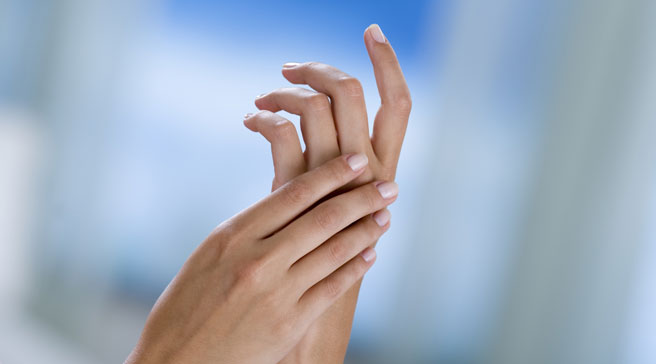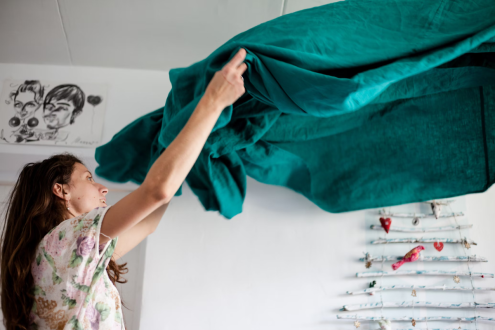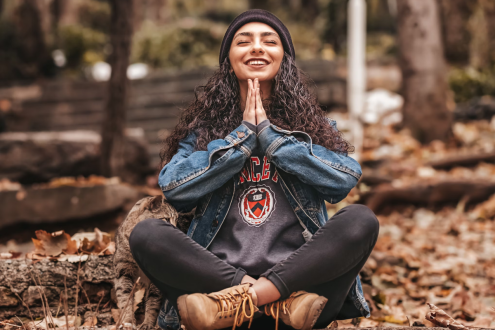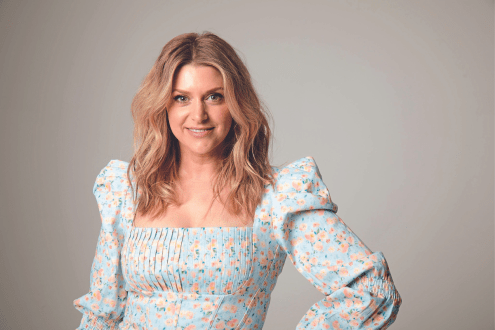Life in your hands
We use our hands to express our thoughts and feelings, but their appearance gives away much more, says Emma Cook

Our hands translate and express feelings through gesture and touch; stroke and soothe as well as create and achieve. They are unique among all species in articulating thoughts and emotion in such a complex, delicate way.
‘Hands have essentially created the race that we are today. There’s an argument that the development of our brain could only have evolved as it did from the way our hands manipulated tools,’ says Dr David Lewis-Hodgson, who specialises in non-verbal communication at Sussex University. ‘They are an amazingly flexible piece of equipment.’
It is estimated that in an average lifetime, we open and close our hands about 25 million times. Not surprising when you consider what we expect them to do, except much of the time we barely register their existence. If you’re in any doubt of their visual impact and importance, try to conduct your next conversation with them tucked behind your back. Not only will you find it frustrating, the person you are talking to will immediately sense that an essential element of your communication is absent. Lewis-Hodgson explains: ‘In non-verbal communication, hands are what we call illustrators – punctuating our speech like a conductor controls his orchestra.’
Without realising it, we focus on hands and are often mesmerised by them. The grace of balletic gestures and other forms of dance reminds us of their latent eroticism and the human power of touch. How we reach out to others is, of course, determined by our feelings for them – although how we touch ourselves while we’re communicating can speak volumes, too.
Psychologists say that if our hands repeatedly flit to our face or caress our hair when we’re talking to the opposite sex, we’re subconsciously attracted to them. If that person mirrors the gesture, it reflects and reinforces our own, creating a delicate interplay of signals beyond our control. Touch is also the cement of relationships, a non-verbal courtship that allows flirtation to move towards tentative intimacy and beyond.
From the delicious awkwardness of first-date hand-holding to the erotic frisson of cool fingertips grazing hot skin, touch unifies, even if just in a heart-felt embrace. Beyond sex, hands can offer a tremendous source of reassurance both for ourselves and those around us. Tracing loved-ones’ faces with our fingers or touching familiar objects when we’re anxious reminds us that we exist in solid, physical surroundings, keeping us grounded and safe. If gesture is a recognised form of language, our hands also communicate by their appearance alone, inferring levels of self-esteem, nervousness and insecurity.
‘We immediately make judgements depending on what other people’s hands look like,’ says Lewis-Hodgson. ‘You can tell a lot about anxiety states simply from chewed nails or ragged cuticles. A firm grip gives a strong impression, while a weak, sweaty palm tells its own story.’ Our hands also reveal how we spend our time. In the Victorian era, the epitome of fine breeding in a lady was porcelain-white, blemish-free skin, signifying a life devoted to shaded leisure rather than toiling in the sun. Equally, in modern times hands can betray rather more about us than we’d perhaps like. Pity poor Madonna, who had to endure the indignity of those pap shots detailing her sinewy wrists and prominent veins – coining the term ‘Madonna claw’. While we can conceal wrinkles and blemishes on our faces, hands are more exposed and exposing. According to a study carried out by the American Society of Plastic Surgeons, hands were by far the most accurate indicator of a woman’s age. When respondents were asked to examine photographs of hands and estimate their age, most did so with unerring accuracy.
Thankfully, while other areas of our body take time, money and a great deal of hard labour to improve, a simple manicure can instantly transform neglected mitts. It’s hard to think of any other beauty treatment that offers so much for so little cost – an instant sprinkle of finger-tip fairy-dust that costs less than £20 a pop. These days there’s nothing elitist about a manicure and you don’t have to be a beauty addict to indulge. You’re as likely to see Ann Widdecombe with glamorous nails as Cheryl Cole. Groomed nails allow us to flirt with high-end fashion; a Chanel 2.55 swinging from my shoulder is still a dream, but while I’m waiting I’ll have a bottle of its Jade polish, thank you. Rouge Noir and, even more recently, Chanel’s mushroom hue Particulière have captivated women for similar reasons.
The joy of polished nails is also personal and intimate – this isn’t about our men, it’s about us. Groomed hands are there before our eyes, visible to us in ways that other parts of the body rarely are, providing an easily accessible platform for adornment. So while we scrabble through the chaos of our lives – messy handbags, children’s satchels and the weekly shop – a sculpted cuticle and a flash of Rouge Noir can convince us, fleetingly, that we’re still on top. Which is why women usually more driven by the FTSE 100 than a frivolous fashion trend entirely understand the transformative power of a classy manicure.
Take Julia Hobsbawm, former business partner of Gordon Brown’s wife Sarah and now CEO of networking company Editorial Intelligence, whose personal manicurist is almost like family. ‘Feeling frazzled is not glamorous. Manicures give me an edge even when I feel crumpled and under-slept. By making the time for manicures, I’m reinforcing the message that I value myself even when I’m feeling trampled underfoot by everyone else’s needs.’ Hobsbawm, like so many women, views groomed, beautifully manicured hands as evidence that they can still balance work and family without looking utterly defeated by the challenge. Who wouldn’t pay for such a simple pleasure that can, until the chips reappear, achieve just that?
Photograph: Comstock Images








